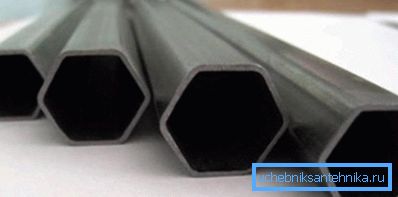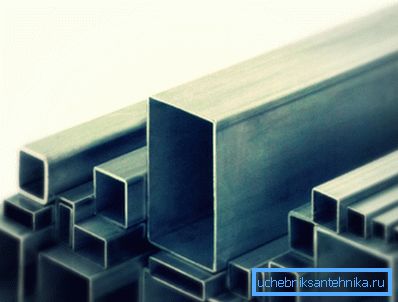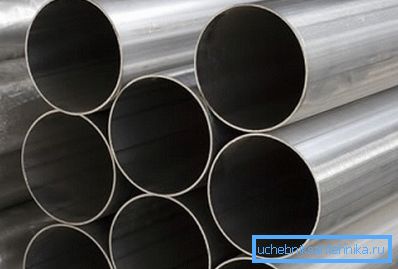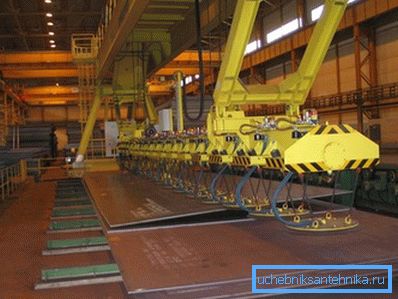Longitudinal steel pipe: characteristics and features of the
Welded longitudinal pipes according to GOST 10704 91 and 10705-80 are metalware, welded from steel strips. Industrial production of this type of products includes such steps as forming blanks from sheet metal and welding them into a single whole.
Technical and operational characteristics of the product are largely determined by the quality of the metal used and the technology of welding parts. Let us consider in more detail what are the hardware, manufactured according to GOST 10704 91.

Main characteristics

The longitudinal electric-welded pipe is an all-metal product with a round or rectangular cross-sectional shape, which is made exclusively under factory conditions using special rolling equipment. The production of the product is carried out by rolling the sheet steel into the workpiece, which is boiled by the method of a direct joint.
In accordance with the method of forming the billet straight seam pipes are divided into the following types:
- cold deformed;
- hot rolled;
- cold rolled;
- cold drawn

The weld has a longitudinal direction, which provides optimal strength parameters.
Important: Pipes welded by this method do not provide for the possibility of mechanical bending, as this may lead to their cracking or crushing with loss of the initial configuration and strength properties.
In the manufacture of electric-welded pipes used carbon and low carbon steel calm, semi-calm and boiling brands St1, St2, St3, St4, 08Yu and 22GYu.
Optimal strength properties of the product will be provided with the content in steel:
- carbon - not more than 0.25%;
- sulfur - 0,056%;
- phosphorus - 0.046%.
In accordance with the type and grade of steel used, longitudinal welded metal products are divided into the following types:
- SP - modification of the calm steel;
- PS - modification of semi-quiescent steel;
- KP - modification of boiling steel.

Belonging to one of the above categories is indicated in the marking applied to the surface of pipes or indicated in the accompanying documentation.
Longitudinal welded pipes of low-alloyed and carbon steel, whose diameter is 10-530 mm, are divided into the following groups:
- with normalized chemical composition;
- with rated mechanical properties;
- with rated mechanical properties and chemical composition;
- with standardized test hydraulic pressure.
The use of the above steel grades is not able to provide the finished product with sufficient resistance to corrosion processes. That is why, finished pipes before or after the installation work are subjected to special treatment, which consists in the use of special protective compounds or in the application of traditional paints and varnishes (LKM). (See also the article Protection against corrosion of steel pipes: features.)

A separate category is a galvanized welded pipe, for the production of which carbon steel grades 10, 20, 35, 45 and 15XM are used. Such hardware can be used for its intended purpose with minimal anti-corrosion treatment or without it at all.
Finished products, regardless of the grade of the used production materials, must withstand a long-term working pressure of not more than 16 MPa. This quality largely determines the scope of use of welded longitudinal pipes.
Scope of application

The range of longitudinal welded pipes on the market has found wide application in the oil and gas processing and mining industries in accordance with the requirements set out in GOST 20295-85. With the use of these products are built pipelines, both with external and with a recessed location. (See also the article Sewage system: features.)
Important: The wall thickness of the pipeline with underground location should be at least 3 mm. Ground or aboveground pipelines are made of pipes with a wall thickness of not more than 2 mm.
The main field of application of longitudinal welded pipes was chosen by chance, since these products have the following distinctive qualities:
- Simplicity of the welding connection when performing branches, corner and end joints, when installing valves etc.
- Relatively low weight compared to other ferrous metal products. and, as a result, ease of transportation and cheaper installation work.
- Acceptable price, which has a positive effect on the cost of the pipeline as a whole.
- Resistance to precipitation and other negative effects of environmental factors (subject to prior anticorrosion preparation).
- The possibility of operation in almost all climatic zones without compromising the integrity of the welds and pipelines in general.
Of course, the scope of application of welded longitudinal pipes is not limited to the construction of oil and gas pipelines, since such products are characterized by versatility of use.
In accordance with the scope of application, these pipes are divided into the following classes:
- Class 1 - equipped with products intended for the transport of liquid and gaseous media under low pressure. In addition, such pipes are commonly used in the construction of scaffolding and similar metal structures, on which there is a low mechanical load.
- Class 2 - used mainly in the construction of oil, gas and water pipelines. Also, the use of metal products corresponding to this class extends to equipping chemical industry enterprises.
- Grade 3 - used in the chemical and food industries. A distinctive feature of such products is resistance to high temperatures and to excessive short-term pressure.
- 4 class - such pipes are used mainly for exploration of gas and oil fields.
- Grade 5 - is the optimal solution for the assembly of metal structures in demand in the engineering and car-building industries. Less commonly, such pipes are used on construction sites for assembling scaffolding or frames for building a number of construction objects.
- Grade 6 - is used exclusively in the engineering industry.
Main sizes

Instructions for the selection and purchase of electric welded pipes as well as other metal-rolling depends on the sizes. Consider the standard combination of lengths and diameters that are used by domestic manufacturers.
Products with unmeasured length:
- From 2 meters or more with a cross-sectional diameter of up to 30 mm;
- From 4 meters and more with a diameter of 30-70 mm;
- From 5 meters and more with a diameter of not less than 152 mm.
Products with a length:
- 5-9 meters with a diameter of not more than 70 mm;
- 6-9 meters with a diameter of 70-219 mm;
- 10-12 meters with a diameter of not more than 426 mm.
In addition, an electric-welded steel pipe of multiple lengths, the multiplicity of which is more than 250 mm, is produced.
Conclusion
Now you know what the longitudinal welded pipes are, how they are made and for what purposes they are used. Do you have any questions to clarify? More useful information you can find by watching the video in this article.